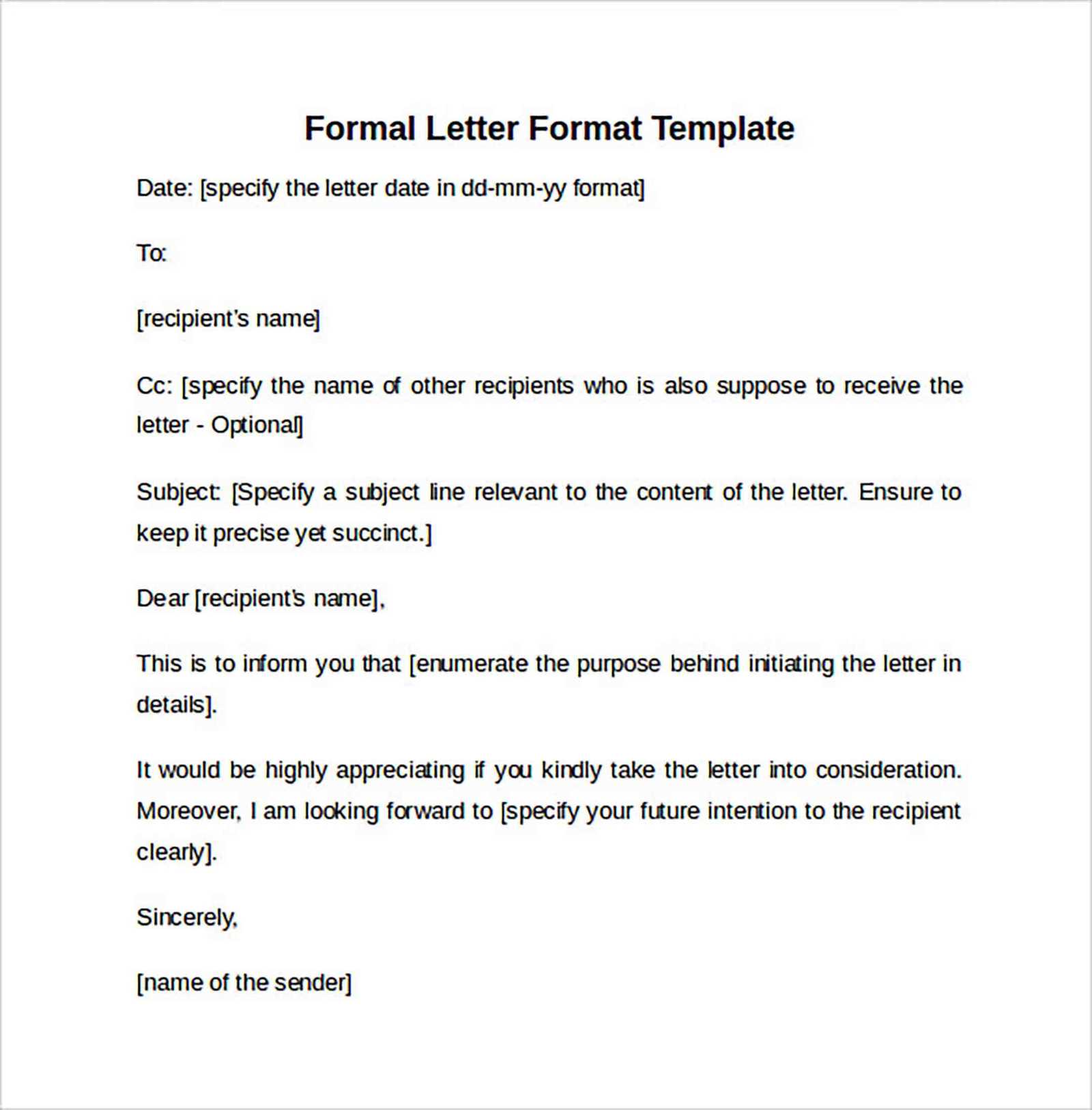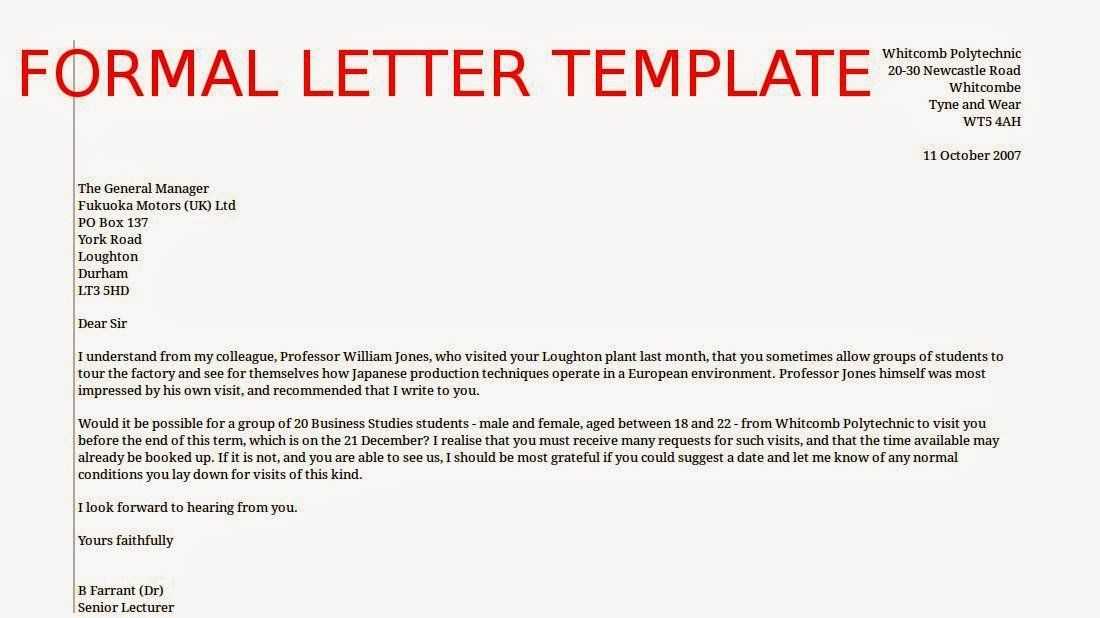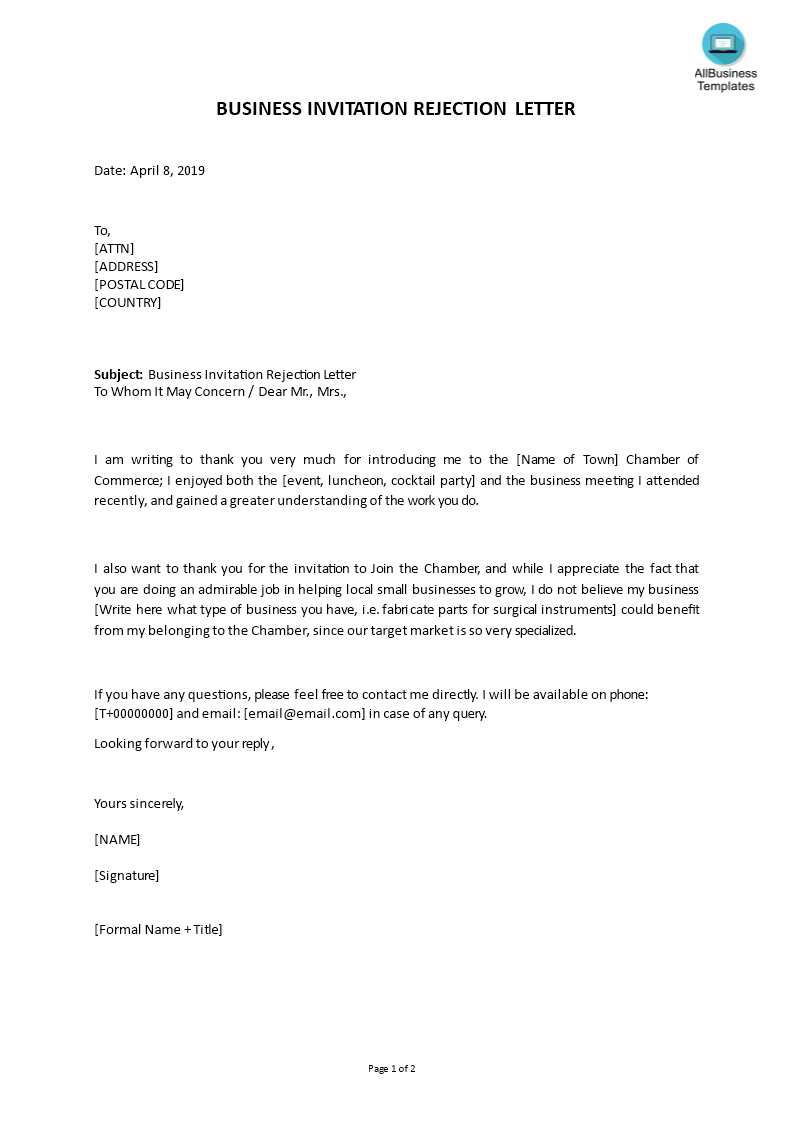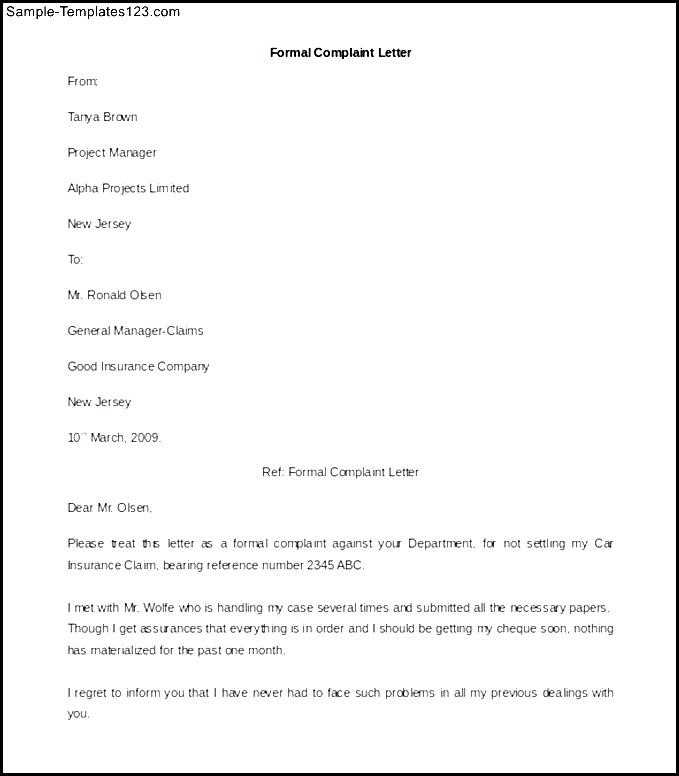Professional Formal Rejection Letter Template for Your Needs

In professional environments, it’s often necessary to inform individuals that their requests or proposals have not been accepted. While this can be a delicate task, delivering the message in a respectful and clear manner is crucial. A well-crafted communication helps maintain positive relationships and reflects your organization’s professionalism.
Essential Components of a Rejection Communication
When writing a message to decline an offer, there are a few key elements to keep in mind to ensure clarity and professionalism:
- Respectful tone: Acknowledge the effort and time invested by the other party.
- Clear reasoning: Provide a concise explanation for the decision, if appropriate.
- Encouragement: Offer positive remarks to keep the door open for future interactions, if relevant.
Step-by-Step Guide to Crafting a Clear Response

Writing a respectful decline involves several steps:
- Start with gratitude: Thank the individual for their time, interest, or effort.
- Deliver the decision: Clearly state that you are unable to proceed with their request.
- Provide context: If appropriate, briefly explain the reasons behind your decision.
- End on a positive note: Express appreciation for their understanding and offer encouragement for future possibilities.
Examples of Professional Responses

Here are a few examples of how you might phrase a polite refusal:
- Example 1: “We truly appreciate the time and effort you dedicated to this proposal. After careful consideration, we have decided to move forward with another option. Thank you for your understanding, and we hope to have the opportunity to work with you in the future.”
- Example 2: “Thank you for your application and interest in the position. While we were impressed with your qualifications, we have selected another candidate whose experience aligns more closely with our needs. We wish you all the best in your job search.”
When to Send a Polite Refusal
Knowing when to communicate your decision is as important as how you do it. Responding in a timely manner is essential to respect the other person’s time and expectations. Ideally, you should send your communication as soon as a decision is made to avoid unnecessary waiting. Aim for clarity and professionalism throughout the process to maintain a strong reputation and good relations with others.
Why a Response Matters, Key Components, and Crafting a Polite Decline

Responding to offers, requests, or proposals is a key aspect of maintaining professional relationships. A well-crafted message to decline an offer ensures clarity, preserves goodwill, and upholds your organization’s reputation. It’s important to approach this task with respect and care to avoid misunderstandings and foster a positive environment for future opportunities.
One of the essential aspects of any refusal is maintaining a respectful tone. A message that communicates your decision politely while also providing context can help mitigate any disappointment. A concise yet thoughtful response can strengthen relationships and demonstrate your professionalism.
Key elements to include are a clear statement of the decision, an explanation where appropriate, and appreciation for the time and effort the other party invested. This not only ensures transparency but also reinforces mutual respect. It’s equally important to acknowledge their effort and encourage future opportunities for collaboration, when applicable.
When crafting a polite decline, start by expressing your gratitude for the individual’s interest or submission. Clearly state that you are unable to move forward, and provide a brief, neutral explanation if necessary. Conclude on a positive note to keep the communication open for possible future interactions.
Avoiding certain errors is crucial. Do not use vague language that leaves room for misinterpretation, and never make promises you can’t keep. Also, refrain from overly detailed justifications for your decision, as this can come off as unnecessary or dismissive. Being direct and professional without over-explaining is key.
Examples of professional responses might include: “Thank you for your submission. After careful review, we have decided to proceed with another option. We appreciate your interest and hope to collaborate on future projects,” or “We appreciate your application and the time you dedicated to it. Unfortunately, we have selected another candidate whose experience better matches our current needs.”
Timing also plays an important role. Sending a response promptly once a decision has been made is crucial. It shows respect for the other party’s time and allows them to move forward without delay.